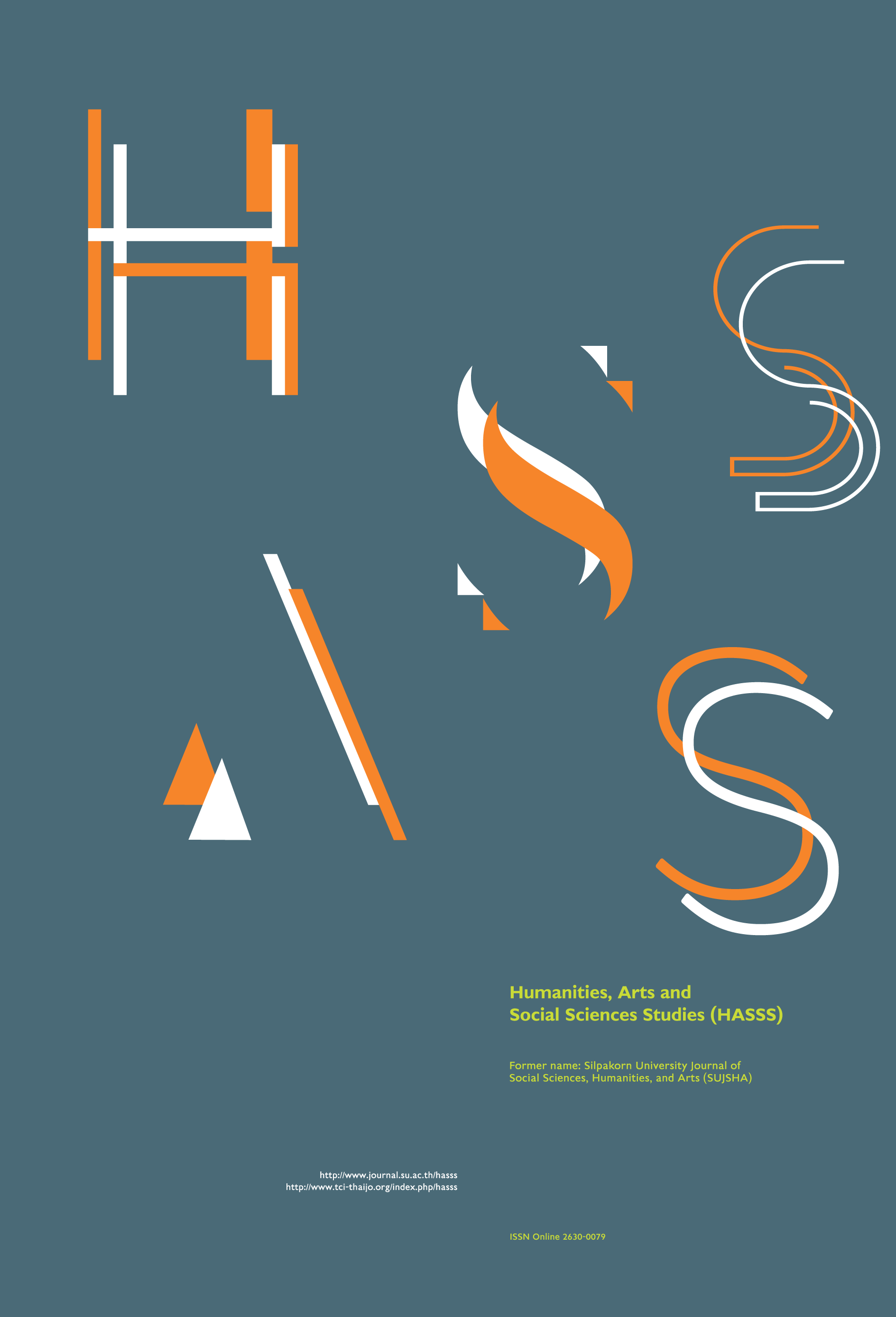Analysis of Thai Khon main characters and implementation into high-end fashion design
Main Article Content
Abstract
Thai Khon is a traditional Thai royal drama. The performance script "Ramakien" is adapted from the ancient Indian epic "Ramayana", which has had a significant impact on the history of Thai literature and art. Thai Khon has been passed down from the Ayutthaya era. It is part of Thai high-end theater performances and cultural arts. Thai Khon is not only a performing art but a combination of culture, art and ceremony. It is Thailand's precious intangible cultural heritage, inheriting Thai traditional customs and historical culture.Thai Khon is famous for its colorful costumes and masks. In this research, the historical background and costume concept of Thai Khon will be analyzed. This research employed research methods such as literature analysis, field observation, and qualitative research methods to summarize and analyze the data, so as to obtain the important data that constitutes the design elements, how a new design method can incorporate the important design elements of Thai Khon in High-end fashion design. In the previous research on Thai Khon, researchers mainly focused on its historical narrative and costume making technology. However, even though there has been attention given to the inheritance of Thai Khon, there is a lack in the research on how to combine innovate this ancient art through the incorporation of modern fashion and design. This research is conducted with the purpose to inspect the inheritance and innovation of Thai Khon culture from a new perspective. The use of high-end fashion design in Thai Khon should make Thailand’s unique intangible cultural heritage more approachable and accessible to the public.
Downloads
Article Details

This work is licensed under a Creative Commons Attribution-NonCommercial-NoDerivatives 4.0 International License.
All rights reserved. Apart from citations for the purposes of research, private study, or criticism and review,no part of this publication may be reproduced, stored or transmitted in any other form without prior written permission by the publisher.
References
Jongda, S., Virulrak, S. and Roadkasamsri, V. (2015). The art of Khon Lakhon costumes. Asian Culture and History 7(1): 97.
Jpatokal. (2009). WatPhraKeaw Ramayana Chariot. [Online URL: https://en.wikipedia.org/wiki/File:WatPhraKeaw_Ramayana_Chariot.JPG] accessed on May 21, 2018.
Kiriwat, A. (2001). Khōn: Masked Dance Drama of the Thai Epic Ramakien. [Online URL: http://book.culture.go.th/khon/mobile/index.html#p=1] accessed on December 7, 2019.
L’Officiel Thailand. (2014). The Exhibition: Wisdom of the Kingdom. [Online URL: https://lofficielthailand.com/2014/07/] accessed on May 27, 2019.
Miettinen, J. O. (2017). Parallel Narrative Methods: Ramayana in the Arts of Southeast Asia. In Reading the Sacred Scriptures: From Oral Tradition to Written Documents and their Reception, edited by S. D. Long. pp. 282-294. New York: Routledge.
Panpaen, S. (2017). Thai Khon Main Character. [Online URL: https://sites.google.com/site/khonnatsilpkhxngkhnthiy/taw-lakhr/tawnang] accessed on January 17, 2019.
Srinin, W. (2018). A comparative study of Indian Kathakali and Thai classical masked Play. Journal of International Studies 6(2): 208-226.
Srisuchat, A. (2018). Indigenous Thought on Indian Traditions in Thailand. In Cultural and Civilisational Links between India and Southeast Asia, edited by S. Saran. pp. 67-91. Singapore: Palgrave Macmillan.
Tillinghast, R. (2016). On pilgrimage in India. Southwest Review 101(1): 44-60.
Truong, A. R. (2017). "Du Nô à Mata Hari" au Musée Guimet. [Online URL: https://www.pinterest.com/pin/290904457162852389/] accessed on March 14, 2018.


